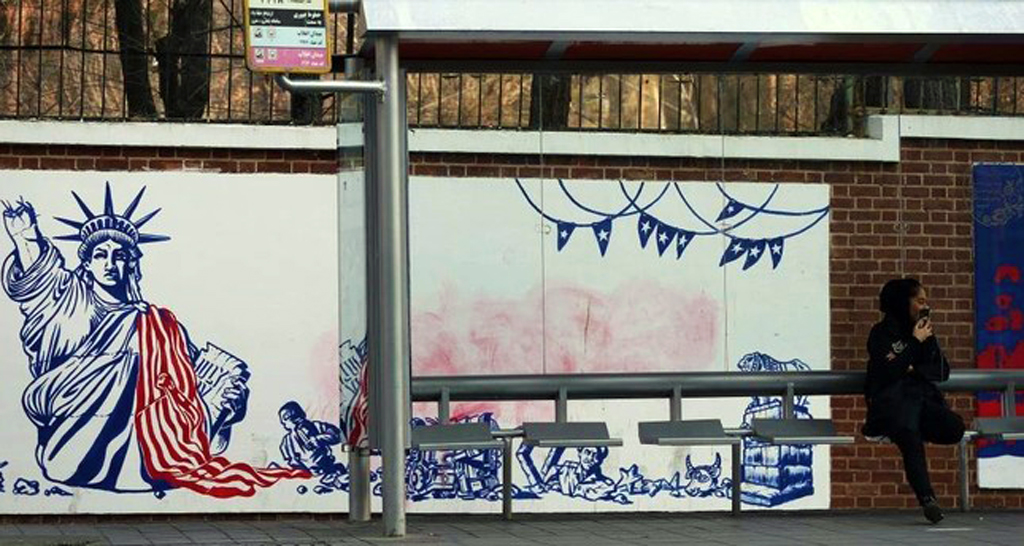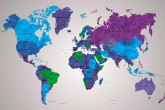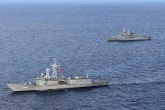The killing of Qasem Soleimani and his close associates in an American airstrike in Baghdad Thursday night was without question one of the most significant developments in the Middle East over the last several years – significant in terms of the profile of its target as well as the unexpectedness of such an attack.
For many years, Soleimani was the face of Iranian influence in the region, sometimes at the expense of the lives of the civilian population of various countries and by various methods. As a loyal servant of the Iranian regime and a powerful figure in Tehran, he not only had a hand in the design of the country’s foreign policy goals for the region but also succeeded in implementing those plans personally. On many occasions, it was falsely reported that he had been killed or wounded in conflict zones in Syria and Iraq.
There were even reports that indicated debate between Israeli and U.S. officials over the wisdom of targeting Soleimani. According to these reports, U.S. officials were more cautious about the potential outcomes and consequences of a move against such a high profile target and had even prevented his assassination in several instances. Indeed, since reports started to emerge about the assassination, the initial response among American Twitter users has been one of extreme caution.
Questions have mostly arisen over how killing one of the most influential Iranians in the world constitutes part of an “exit strategy” in the escalation of tension between the U.S. and Iran. Some have even questioned the legal grounds of the authorization to commit such an attack without congressional approval, considering the possible stakes could be an all-out war with Iran.
The fact that President Donald Trump did not make an official statement on his Twitter account in wake of the attack, instead posting nothing more than an American flag, has increased the number of unknowns surrounding the incident. For now, however, more important questions surround the potential outcome of the attack.
For some, this is not even relevant, while others see the current situation as a veritable state of war, or a declaration as such by the U.S. However, there are too many unknowns about the nature of a possible next step in this war. There are serious debates, firstly, on the location of a possible war and what kind of instruments the parties could use in order to retaliate against one another. The pledge by officials in Tehran to “avenge” Soleimani can be considered a forewarning of the coming storm over an already destabilized Middle East. In their view, given the profile of Soleimani, revenge is almost unavoidable given how a lack of retaliatory measures would put major pressure on the regime at such a critical juncture in its history.
In the case of one or a series of revenge attacks, escalation would be unavoidable, with violence spiraling out of control into a formal declaration of war. The location of these reprisals will not be known until they take place. Possible targets could include either Americans themselves or American allies in the region. Most dangerously, they could target both.
Others say that even if there was a retaliation from the Iranian side, this retaliation might not take place immediately and would be extremely measured. Iran may prefer to wait until the situation cools down to catch its targets unprepared – or it could even avoid an attack altogether, as this would ultimately have the potential to lead to a sharp escalation of the situation.
Meanwhile, the fact that President Trump is considered so unpredictable when it comes to foreign and national security policy may turn out to be an important asset for the U.S. In fact, in Tehran, some will definitely presume that President Trump’s order to kill Soleimani is a clear indication that he has no red lines at all when it comes to the Iranian regime. Thus, a retaliation may bring about a more dangerous situation for the Iranian regime than might otherwise have been the case.
In the meantime, there will be many questions that crop up about the nature of the attack itself. One of the most important of these surrounds the decision process behind the order to kill Qasem Soleimani. Was this decision taken in light of the embassy attack in Baghdad or was it planned beforehand? Who was in favor of carrying out this attack and who was more cautious about it within the administration? Where did President Trump stand when it came to killing Soleimani? Was there a divergence of opinion between the various U.S. agencies? What were the potential second and third steps after these attacks? What is next for U.S. foreign policy toward Iran going forward? Will the U.S. commit to protecting its allies if there is a direct or indirect attack from the Iranian side? Were any foreign governments involved in the planning, decision to execute or execution of the attack? If yes, then what is the measure of influence these foreign governments had in taking this critical decision?
Considering the gravity of the tension between Iran and the U.S. right now, we may consider that this act was likely the last nail in the coffin of a potential rapprochement between the two nations over Iran’s nuclear deal. But what is next? Could this justify the Iranian regime’s attempt to develop a nuclear weapon? Indeed, many questions hang over the future.
All of these questions will be important in determining the potential outcome of this attack. Although there are different approaches on how to judge the attack right now, the certain consensus among observers seems to be that this is not only one game-changer in U.S.-Iranian relations but could change the nature of games across the region.
[Daily Sabah, 4 January 2020]



